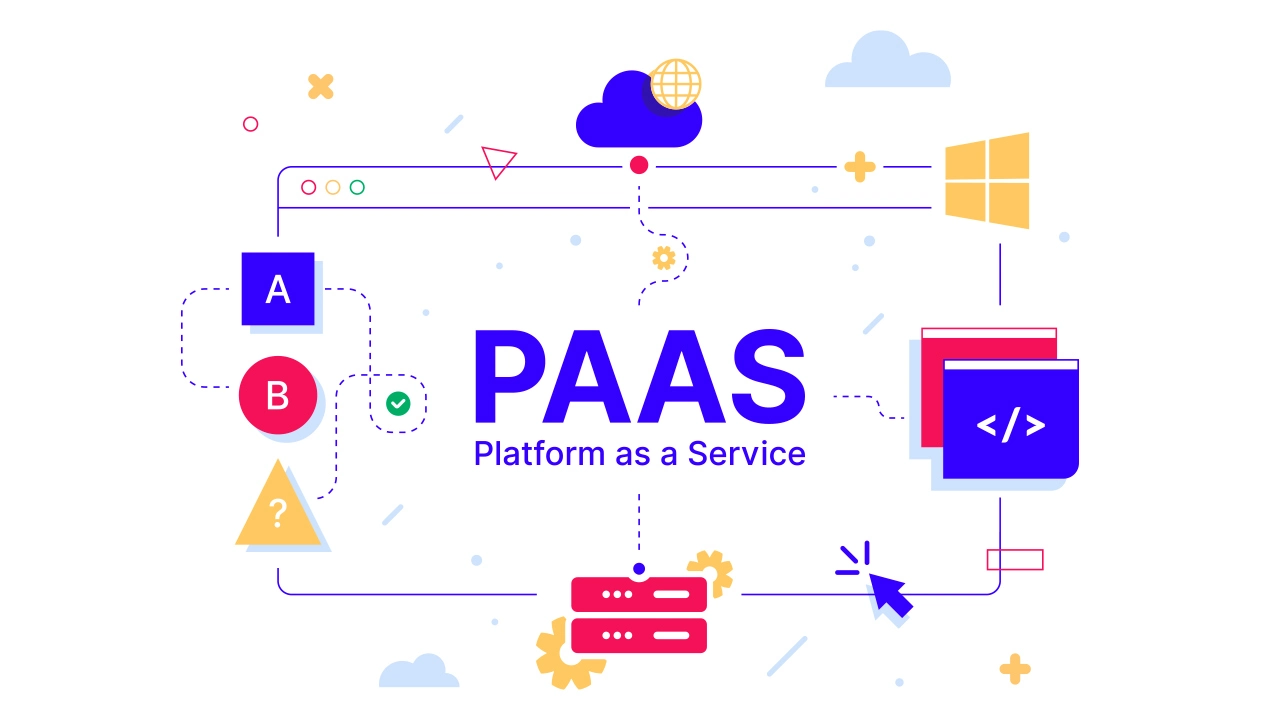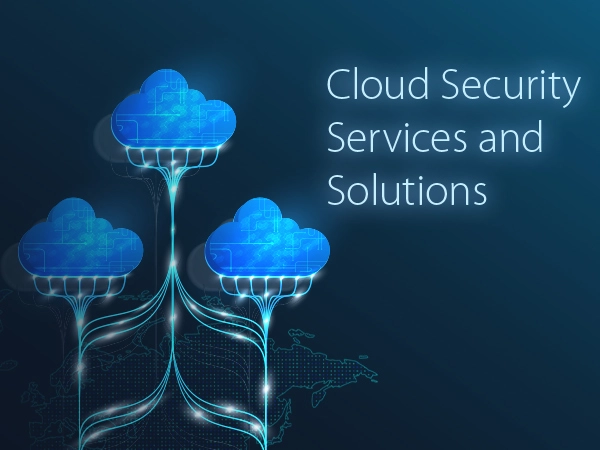Index
- Introduction
- What is PaaS?
- How does PaaS work?
- Features of PaaS
- Benefits of Using PaaS
- Types of PaaS
- Key Components of PaaS
- PaaS Use Cases or Applications
- PaaS Related Products and Services
- Key Factors to Consider While Selecting the Right PaaS Provider
- Future of the PaaS Market and Business Model
- Conclusion
- FAQs
Platform as a Service, or PaaS, is a cloud computing service that provides customers with a platform to develop, run, and manage applications without building and maintaining the necessary infrastructure typically associated with developing and launching apps. With PaaS, the cloud provider manages the underlying hardware and software for you so you can focus on your applications. PaaS makes building, testing, and deploying apps faster, easier, and more cost-effective. The key benefit is reducing the complexity around app development by offloading infrastructure management.
What is PaaS?
PaaS is like a special workspace in the cloud where developers can build, test, and deploy applications without setting up all the backend infrastructure. It provides it all upfront so you can jump straight to creating the fun application logic and user experiences. It’s the perfect environment to build cloud-based apps without distractions quickly. Just focus on coding what makes your application special, and let the cloud provider handle the dull infrastructure maintenance behind the scenes.
And Software-as-a-Service, or SaaS, is signing up for apps already good to go. Super convenient but has less flexibility.
PaaS hits the sweet spot in between. You get way more control than SaaS to build what you need, plus tons of time-saving services, scalability, and automation that you must set up with IaaS.
The key difference is PaaS brings together a pre-packed platform tuned specifically for accelerating development workflows. We’re talking ready-made dev environments, built-in databases and APIs, auto-scaling capacity, streamlined deployments – everything engineered to help you code apps faster.
So if you want cloud infrastructure that just gets out of your way so you can focus on shipping great software, PaaS is your ticket!
How does PaaS work?
PaaS provides a pre-set platform optimized for developing cloud applications without configuring the underlying infrastructure things like servers and databases. You log into the PaaS environment, download the necessary software development kits, and start coding your application logic and interfaces. Behind the easy-to-use PaaS dashboard or control panel, there are all kinds of complex services running like storage, security, integration capabilities, and more. But you don’t have to worry about any of it! The PaaS provider handles it all for you seamlessly so you can focus entirely on rapid application development.
Features of PaaS
a. Scalability
One of the best parts about PaaS is that it can automatically scale your apps up or down based on demand. No more guessing how much infrastructure you’ll need! The platform is like a personal assistant for your app, monitoring its workload and adjusting resources as required.
b. Development Tools
PaaS saves you from headaches by providing all the dev tools and environments you could ever need for your app, all set up and configured for you out of the box. We’re talking about everything from code editors and debugging tools to workflows for CI/CD. It’s like having a whole development and testing toolkit ready to rock, streamlining your coding and allowing you to deliver apps faster.
c. Integration Capabilities
Don’t you hate integrating different apps and data sources? With PaaS, integrations are a breeze. Their platform handles connecting to virtually any API, database, or service you could want. So you can pull data from various sources or hook up third-party apps without the usual headaches.
Benefits of Using PaaS
- Cost Efficiency: PaaS lets you save a ton of money! Instead of investing in expensive servers and data centers you barely use, you pay only for the actual cloud resources your apps need.
- Time Savings: With PaaS in your corner, you get back a chunk of time that used to vanish into server updates, installing software, and security patches. It’s like PaaS clears your schedule so you can geek out on app development nonstop.
- Focus on Innovation: PaaS liberates you from infrastructure drudgery so you can set your creativity free! No more limitations from maintaining systems. The platform gives you the foundations to build innovative apps quickly.
Types of PaaS
a. Public PaaS
This is like the cool, handy PaaS provider everyone uses. Public PaaS means a third-party service over the internet hosts the platform and infrastructure. So just create an account with a public provider like AWS, Google Cloud, or Heroku, and you’ll have instant access to their development platforms and tools! It’s convenient and flexible, and you only pay for what you use.
b. Private PaaS
This is like having your own custom in-house PaaS. With private PaaS, the platform is set up on your company’s own data center and hardware. So it’s a more secure option if you have confidential applications or data. Your IT team maintains complete control instead of relying on an outside provider. But this also means you handle all that infrastructure management internally.
c. Hybrid PaaS
Hybrid PaaS combines public and private PaaS capabilities. Your core apps and sensitive data remain in a private environment you control. But you can also leverage scalable public cloud services as needed. This balances flexibility, security and cost-efficiency. So you don’t have to choose between public convenience and private control.
Key Components of PaaS
Development Tools
PaaS comes loaded with all the dev tools you could need to code apps, so you don’t have to stress installing and managing them yourself. I’m talking code editors, debuggers, compilers, workflows for CI/CD, you name it. It’s like having a customized development environment ready to go! These tools help you focus on writing code instead of fiddling with tool setup. And collab features let your team work together seamlessly no matter where they are.
Runtime Services
Now for the environment, your app actually needs to run and operate. The PaaS provides the full runtime system already configured and ready to host your app once it’s developed. I’m talking web servers, application servers, load balancers – all the infrastructure to run your code. The PaaS sets it all up automatically based on your app requirements. And the services scale up or down dynamically based on traffic and usage. It’s like your app has its own butler handling whatever it needs to run smoothly! No more manually provisioning resources.
Database Management
How are databases needed for almost every app but can be a pain to set up and manage? Well with PaaS, databases are provided and handled for you! As a developer, you just indicate what databases or data services you need like SQL, NoSQL, etc. The platform sets them up, handles admin tasks like backups and updates, and scales data capacity as required. Whether it’s huge storage capacity or lightning-fast caching, the PaaS has you covered on the data infrastructure front so you can focus on using the data.
PaaS Use Cases or Applications
- Web and Mobile Apps: PaaS is perfect for building and hosting mobile and web apps! It lets developers quickly build apps using the platform’s tools, runtimes, and services. Plus, it handles scaling seamlessly as your app grows. No need to predict infrastructure needs months in advance.
- Rapid Prototyping: Want to build a prototype or proof-of-concept for a new app idea? PaaS instantly lets you spin up new apps, tools, databases, etc., without waiting around for infrastructure. Develop, test, and iterate on prototypes rapidly to validate concepts before investing more time. The quick provisioning and flexibility of PaaS accelerate prototyping.
- Analytics or Business Intelligence: For data-driven apps, PaaS allows fast access to analytics, BI, and visualization tools to uncover insights. The data services like storage and SQL/NoSQL databases provided are ready to power data apps. PaaS enables easily integrating disparate data sources while handling infrastructure, leaving you to focus on crunching and analyzing data.
- Internet of Things: PaaS is ideal for ingesting, processing and analyzing real-time data streams from IoT devices. The instant scalability handles surges in IoT data volume. Built-in tools allow quick development of apps for monitoring, managing, and deriving insights from millions of sensors and connected devices.
PaaS Related Products and Services
The Endpoint Protection TM by 63SATS makes securing your systems easy with powerful threat detection and monitoring abilities. But without all the typical headaches of enterprise security tools.
For starters, it gives you a single dashboard to oversee everything instead of jumping between dozens of consoles. Much better than getting lost in an alphabet soup of security acronyms!
The platform automatically analyzes threats across your endpoints using advanced techniques like machine learning. No more waiting around for your overworked security team to investigate alerts manually. This platform acts on threats immediately.
Once a risk is detected, you get clear actionable alerts – not just vague warnings that leave you clueless. It highlights the affected systems and provides guidance to respond.
Key Factors to Consider While Selecting the Right PaaS Provider
- Data Security: You’re trusting them with your data, so your PaaS better have top-notch security! Look for robust access controls, encryption, compliance audits, and transparency into security practices. You don’t want your data to end up in the wrong hands or get hacked. Make sure they take data protection as seriously as you do!
- Programming Languages and Frameworks: Your PaaS needs to support all the coding languages and frameworks you rely on, so you’re not limited in any way. If they only offer proprietary tools, run away! You want the flexibility to work with open-source tech and customize as needed. Gotta make sure your PaaS has your back no matter what stack you use.
- Performance and Reliability: Things will go downhill fast if your PaaS is slow or keeps crashing! Check their uptime record and service level agreements for reliability. And verify they can handle usage spikes without choking. You don’t want angry customers if your app is sluggish.
- Past Performance: Take a look at who else uses them. Big brands and happy customers are reassuring signs. But also talk to customers similar to your size to see if they deliver on promises. Vendor credibility is make or break.
- Compliance and Regulation: Your PaaS must meet compliance standards if your business or industry has strict requirements. Make sure they have up-to-date audits and certification. You don’t want to get in trouble because your provider cut corners.
Future of the PaaS Market and Business Model
PaaS is expected to grow strongly as more organizations transition to cloud-based development and delivery of applications. PaaS enables faster application development and simplified deployment, key benefits driving adoption.
As the market matures, there will be increased competition among PaaS vendors. They will aim to differentiate by offering expanded development capabilities, deeper analytics/AI services, industry-specific solutions and competitive pricing.
Security will be an area of focus for PaaS providers as applications and data become more sensitive. Providers must implement robust security measures like encryption and role-based access to gain customer trust.
There will be greater specialization and segmentation in the market. Providers will offer tailored PaaS solutions for specific application types like cloud-native, web, mobile, IoT etc. as well as for different industries.
Conclusion
Platform-as-a-Service (PaaS) has transformed application development and delivery by providing developers with a ready-made, auto-scaling platform to build, deploy, and manage modern cloud-native apps. However, as organizations increasingly migrate critical workloads to the cloud, they need robust security capabilities built into their development platforms and workflows. This is where 63SATS comes in.
With innovative technologies like polymorphic memory protection and real-time risk intelligence, 63SATS PaaS enables you to release highly secure, resilient apps faster. You get a Cyber Security Force defending your workloads from within the development environment.












